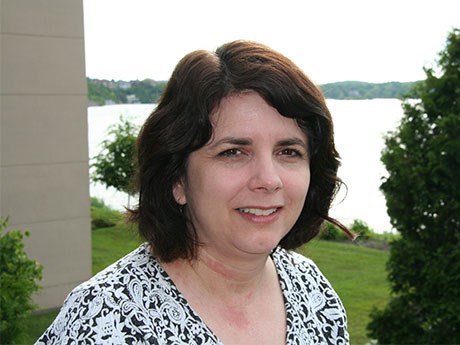Revolution Mining acquires Scheduling Optimization Tool IP
Sudbury-based Revolution Mining, a software startup headed by Lorrie Fava, has acquired the Scheduling Optimization Tool (SOT), a software solution designed to optimize mine planning.
Fava, who oversaw the development of the software at MIRARCO Mining Innovation, acquired the IP “to give some focus to the adoption of SOT within the mining industry.”
Commercially available for six years and distributed by both Datamine and Deswik, SOT is only now beginning to gain traction in the industry.
Acquiring the IP gives Fava the opportunity to work more closely with the distributors and be more available to users.
“Working without SOT, mine planners can make a feasible schedule that adheres to all of their constraints – for example, fleet size and mill capacity – then use their knowledge and experience to manually optimize the schedule or achieve a better net present value,” explained Fava.
Basic mine planning software “helps them make sure that when they move the activities around and choose new times to open mine areas, that it keeps the schedule feasible,” she said.
SOT goes one step further by automatically rescheduling activities or adjusting the order of operations to produce and rank schedules that might never even occur to a mine planner.
“As far as we know, it’s the only software that will do that for underground mining,” said Fava.
“The vast majority of mine planners are still doing schedules the old way, but interest is picking up. For orebodies that are similar to ones they have worked with in the past, their rules of thumb may be giving them pretty close to the best value they can derive, but why not explore the options?” asked Fava. “In more complex orebodies, optimizing a schedule manually isn’t realistic. It’s also very time consuming.
“In a case study with Barrick Gold, mine planner Sean Wilson put in a full manual effort for a complex orebody using conventional practices to optimize it. It took him several months.”
Using SOT, Wilson came up with a schedule that increased the net present value by 20 per cent compared to his best effort performed manually, said Fava.
Several mining companies, including Vale, helped to sponsor the development of SOT and are among the 20 current licensees using the software in Canada, the U.S., Brazil, South Africa and Australia.
Several enhancements to SOT are currently in development. SOT 2.0, scheduled for release this month, “is a whole new platform that has been in development for quite a while,” said Fava. “There are some early adopters who are using it now and giving us feedback, so when we release it, all the bugs will be ironed out as much as possible.”
With SOT 2.0, users will have more flexibility in how they set up their constraints.
“There’s the ability to set up activities that will actually affect your constraints, so if you’re planning for a small mill upgrade or assessing whether you should do an upgrade of the mill to improve your recoveries or increase your capacity, SOT 2.0 will help you determine the best timing for that. In the past, the mine planner would have had to decide in advance when that change was going to happen. Now, it can be part of the scheduling activity.”
Several additional modules are also in development by MIRARCO as part of a SOT Plus initiative. One module will integrate with a ventilation solver to make sure fresh air will be available at the right time to support the schedule.
There’s also a geosequencing module that will help generate schedules that are safe from a geotechnical point of view. It will allow mine planners to select from a menu of rules on stope sequencing that are commonly used in the industry. The new module will automatically put in the links to enforce the rules selected.
“It can be very tedious to put in those links manually,” said Fava. “Automating it opens up the possibility to try alternatives and see which ones support higher value schedules.”
The third module, currently in alpha version, implements the processes that were developed in the theses of two graduates who completed their PhDs through MIRARCO.
The module makes the schedules more robust and able to cope with the uncertainty of variables such as cost per metre, cost per tonne, and commodity prices.
“You input all the financials to assess the net present value, but price projections for minerals aren’t etched in stone,” said Fava. “The aim of the module is to generate schedules that are robust in the face of uncertainty.”
Both Newmont and Vale are working with MIRARCO on SOT Plus, which will take another two years to complete.
Fava also has her sights set on developing SOT for surface mining operations.
“There are some well-respected solutions out there for open pit mine scheduling, but we did a preliminary exercise to see if there is some potential for SOT to do something interesting and new, and there was some promise there, so our intention is to apply SOT’s capabilities to open pit mining with a product launch in the beginning of 2016.



